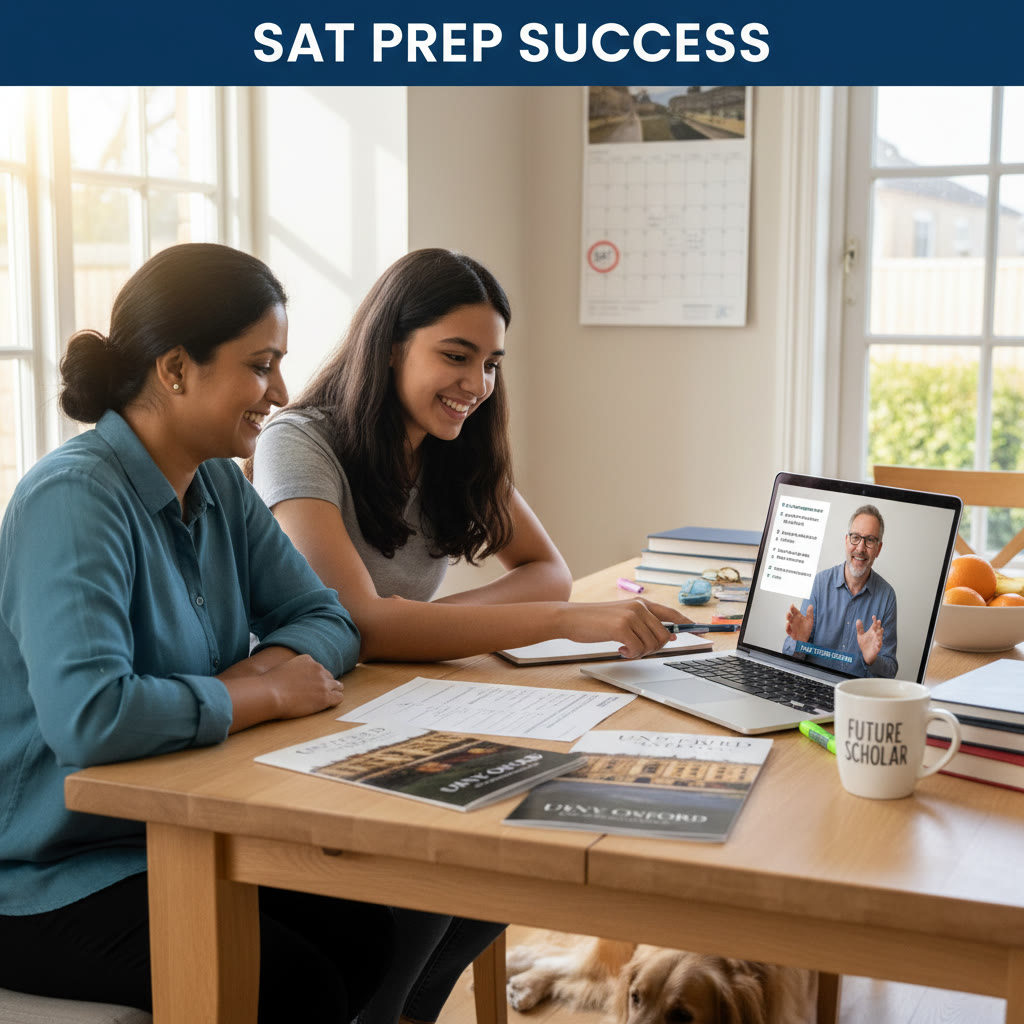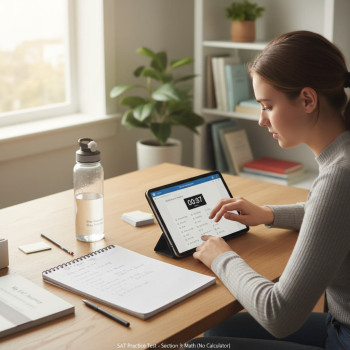Understanding the Big Picture: Why the SAT Matters for Oxford Applicants
Thinking about applying to the University of Oxford from the United States (or anywhere outside the UK)? First, breathe. Oxford’s application process is famously detailed and sometimes a little daunting, but it’s also predictable — in a good way. For many international applicants, the SAT is an important way to demonstrate academic readiness in a format admissions teams recognize. With the move to the Digital SAT, the landscape has changed a bit, but the fundamentals remain: strong academic achievement, evidence of subject mastery, and a clear intellectual curiosity.

How Oxford thinks about standardized tests
Oxford evaluates applications holistically. That means test scores are one part of a larger story that includes your school record, personal statement, teacher references, and — for most courses — an admissions test specific to your subject and an interview. For international applicants, particularly those from systems where grade scales don’t match UK A-levels, standardized tests like the SAT can provide admissions officers with a familiar, comparable data point.
What the University of Oxford Typically Expects
Oxford does not publish a single, universal SAT cutoff. Expectations depend on the course you apply to, the strength of your school curriculum, and how your other application materials present your academic potential. That said, there are practical guidelines you can use to plan a competitive application.
Score guidance and realistic targets
Because Oxford’s undergraduate programs are academically intense and highly selective, competitive international applicants often present strong standardized-test results. A useful approach is to set tiered goals:
- Baseline (Minimum target): Aim to meet a score that demonstrates solid academic preparation—this varies by course and year but think of this as a safe, credible score that avoids automatic filtering in early review.
- Competitive target: Scores that place you above the majority of applicants — comfortable for highly selective courses.
- Stretch target: Exceptional scores that strengthen an already excellent profile or help compensate where other parts of the application are less strong.
Because Oxford often receives applicants who are top performers in their national systems, many successful international candidates aim for Digital SAT scores that clearly sit in the top quartile of test-takers. Instead of obsessing over a single number, use the SAT to complement a strong transcript, excellent recommendations, and outstanding performance on Oxford’s subject-specific admissions tests (where required).
Digital SAT Specifics: What to know for Oxford
The Digital SAT introduced several changes from the paper test: it’s adaptive, shorter, and taken through the Bluebook testing app on approved devices. Admissions teams are aware of this transition, so what matters most is demonstrating consistent, high-level performance on the assessment platform.
Practical Digital SAT prep tips
- Practice on the same type of device you’ll use on test day and become familiar with Bluebook’s interface and adaptive behavior.
- Focus on timing strategies for adaptive sections: accuracy matters because the second module adapts based on your earlier performance.
- Use official Digital SAT practice resources and timed full-length digital practice tests to build stamina and confidence.
How Oxford will view your Digital SAT score
Admissions officers will interpret your Digital SAT within the broader application. A strong score supports your academic narrative — especially if your high school’s grading scale is unfamiliar to UK reviewers — but it rarely stands alone. If your course requires a subject admissions test (for example, MAT for Mathematics, BMAT for Medicine, or LNAT for Law where applicable), excellence in that test and at interview often weigh more heavily than your SAT score.
Subject Tests, Admissions Tests, and Alternatives
Oxford relies heavily on subject-specific admissions tests and interviews for many courses. Unlike some U.S. institutions that historically used SAT Subject Tests, Oxford’s requirements are centered on the official Oxford admissions tests for each course.
Common Oxford admissions tests by subject (examples)
- Mathematics: Mathematics Admissions Test (MAT)
- Engineering or Computer Science: Test(s) specific to the course (e.g., Mathematics paper or Computer Science test)
- Medicine: BMAT (BioMedical Admissions Test)
- Law: LNAT for some applicants or course-specific assessments
If you’re applying to a course with an admissions test, prioritize that preparation alongside your Digital SAT study. Performing very well in Oxford’s admissions test can strongly influence interview invitations and admission decisions.
Timeline and logistics: When to take the Digital SAT for Oxford applicants
Timing matters. Oxford’s application deadlines and the testing calendar interact, so you should plan backwards from the deadline for your application (usually in October for the standard undergraduate cycle). International applicants often take standardized tests earlier in junior or senior year to ensure scores are reported on time.
| Action | Suggested Timing | Why it matters |
|---|---|---|
| Take practice Digital SAT | At least 9–12 months before application deadline | Identify strengths/weaknesses and build a study plan |
| Take official Digital SAT | 6–9 months before application deadline | Allows time for retake if needed and score reporting |
| Complete Oxford admissions test (if required) | Follow Oxford’s published dates (often in the autumn) | These tests often have fixed dates and are crucial for interview shortlist |
| Submit UCAS application to Oxford | Usually October (check current year dates) | Deadlines are earlier than many US colleges; miss this and you may not be considered |
Because exact dates and testing windows can change year to year, double-check deadlines for the cycle you’re applying to and schedule test sittings accordingly. If you need a device, plan ahead: the Bluebook app and device checks should be completed at least 30 days before test day.
Putting together a winning SAT and Oxford application strategy
This is where preparation becomes purposeful. Instead of treating each component separately, think of the SAT as part of a narrative that supports your academic interests and readiness for a particular Oxford course.
Actionable strategy steps
- Map out all deadlines: Digital SAT dates, Oxford admissions test dates, UCAS deadline, and recommendation deadlines. Create a calendar you can trust.
- Set a realistic Digital SAT target that aligns with your course competitiveness and personal strengths. Plan for one or two sittings if needed.
- Prioritize admissions-test preparation if your course requires one — those tests are often more determinative than SAT scores.
- Use SAT prep to shore up foundational skills (math reasoning, evidence-based reading, and writing) that will also help in admissions tests and interviews.
- Practice interviews with teachers or mentors; Oxford interviews are focused, academic, and conversational — they test reasoning more than rote recall.
How to use your SAT score to strengthen your Oxford application
A high SAT score can serve several helpful functions:
- It clarifies your academic standing relative to an international benchmark.
- It complements strong grades if your transcript comes from a school unfamiliar to Oxford tutors.
- It can be an argument in your personal statement to demonstrate quantitative or verbal readiness — but only if woven in naturally.
Don’t force the SAT into your personal statement — instead, let it support your academic story. For example, if you used SAT-based practice to build advanced problem-solving skills that helped with mathematics competitions or research projects, mention that linkage briefly and specifically.
Real-world examples and comparisons
Imagine two applicants to Oxford’s PPE program (Philosophy, Politics, and Economics):
- Applicant A has sterling school grades, a 1490 Digital SAT, a strong personal statement discussing a school economics project, and exemplary teacher references. They perform well on the appropriate admissions test and interview. The SAT reinforces an already strong application.
- Applicant B has equally strong grades but a lower SAT (e.g., mid-range) and limited admissions-test preparation. However, they have a standout research project and glowing references. Their admissions-test and interview become the decisive pieces.
The lesson: the SAT helps, but it rarely carries a lone application. Invest energy where it yields the most return for your course (often admissions tests and interview preparation), while using the Digital SAT to provide a reliable benchmark of ability.
How personalized tutoring (including Sparkl’s approach) fits naturally into your plan
Good tutoring helps you study smarter, not just harder. Personalized 1-on-1 guidance can: identify individual weaknesses, craft a tailored study plan, simulate realistic testing conditions (including Bluebook practice), and provide targeted feedback on admissions-test styles and interview prep. For students aiming at Oxford, a tutor who understands both Digital SAT strategy and Oxford admissions tests is especially valuable.
Sparkl’s personalized tutoring approach — with expert tutors, tailored study plans, and AI-driven insights — can be particularly useful for busy students who need focused, efficient preparation. Tutors can balance Digital SAT practice with admissions-test drills, and help you present your academic story in your personal statement and interview.
Practice, pacing, and the psychology of test day
The Digital SAT’s format rewards composed, accurate work. To perform your best on test day:
- Simulate test-day conditions: practice full-length digital tests on the Bluebook or similar interface and follow exact timing.
- Focus on sleep, nutrition, and device readiness. Technical glitches are rare but avoidable with early device checks.
- Develop a brief pre-test routine to manage nerves — a short warm-up, a plan for pacing, and a checklist for the testing device and admission ticket.
Common misconceptions and honest answers
- Misconception: “Oxford requires a perfect SAT.”
Reality: A perfect SAT helps, but Oxford values subject knowledge and interview performance more for many courses. - Misconception: “Admissions tests are optional if I have a great SAT.”
Reality: If your chosen course requires an admissions test, it’s almost always mandatory — do not skip it. - Misconception: “Digital SAT changes mean I don’t need to prepare.”
Reality: The mode changed but the need for deliberate practice, timing, and content understanding remains essential.
Checklist: A month-by-month plan leading up to application
Below is a compact preparatory roadmap you can adapt to your timeline:
- 12+ months out: Choose your course, research Oxford admissions-test requirements, and begin foundational reading and subject work.
- 9–12 months out: Take diagnostic Digital SAT test; plan test dates and schedule admissions-test prep if required.
- 6–9 months out: Take an official Digital SAT if ready; begin intensive admissions-test practice and personal statement drafting.
- 3–6 months out: Finalize personal statement; take mock interviews; retake SAT only if score improvement is realistic and timing allows.
- Final month: Complete UCAS application, request references, and ensure all test scores and materials will be submitted on time.
Final thoughts: Make an application that’s authentically you
Oxford admissions are intellectually exacting but they’re also human. Tutors and admissions tutors want to meet curious, disciplined students who will engage with tutorials and subject material deeply. Use the Digital SAT to demonstrate readiness, but don’t let it define your identity as an applicant. Invest time in the things that matter most for your course: subject mastery, admissions-test excellence, a reflective personal statement, and interview practice.
If you’d like tailored help, consider targeted, personalized tutoring that integrates Digital SAT practice with admissions-test preparation and interview coaching. A disciplined, bespoke plan — whether guided by Sparkl’s 1-on-1 tutors or another high-quality tutor who understands both the Digital SAT and Oxford’s admissions expectations — can make your time more efficient and your performance more confident.

Closing pep talk
Oxford is selective, but selection is ultimately about fit. If your interests, grades, and intellectual temperament match the demands of your chosen course, and you prepare thoughtfully — balancing Digital SAT strategy with admissions-test preparation and interview readiness — you will give yourself the strongest possible chance. Treat each step as part of a story you’re telling about who you are as a learner. That narrative, told honestly and backed by careful preparation, is what Oxford tutors remember.
Good luck — and remember: preparation is progress. Take one measurable, manageable step this week (a timed practice test, a meeting with a teacher, or a 30-minute admissions-test problem set) and build from there. You’ve got this.












No Comments
Leave a comment Cancel